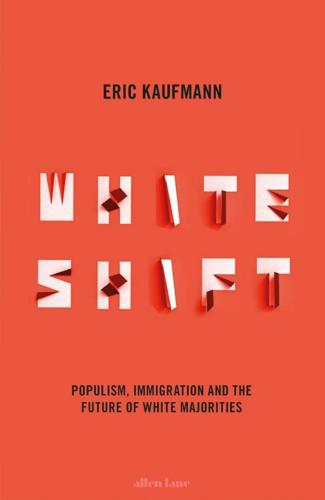
Whiteshift: Populism, Immigration and the Future of White Majorities
by
Eric Kaufmann
Published 24 Oct 2018
New Mexico was admitted to the Union only in 1912, its entry delayed until Anglo settlers – a category which included white Catholics and Jews – predominated over Hispanics there. THE LIBERAL IMMIGRATION TRADITION Chinese immigration was facilitated by the 1868 Burlingame Treaty with China. But this raises the question of who favoured immigration. Was it humanitarian liberals of the kind that champion open immigration today? Hardly. Liberal Progressivism would not emerge for another four decades. Instead, large businesses, pro-growth politicians and the Protestant clerical establishment comprised the main open-borders coalition. Intellectually, proponents of immigration could draw on an important set of symbolic resources which began with the Puritan concept of New England as a refuge from royalist tyranny.
…
Instead, Anglo-Saxon and cosmopolitan nationalisms merged in a happy belief that the Anglo-Saxon has a marvelous capacity for assimilating kindred races, absorbing their valuable qualities, yet remaining essentially unchanged.15 Political demographer Paul Morland suggests that the tremendous demographic expansion of Britain after the industrial revolution, when steady wages led to a lower age of marriage, facilitating higher birth rates, underlay this confidence. For instance, in 1700 France had three times Britain’s population. By 1900, Britain had drawn level even while exporting 25 million people.16 ECONOMIC COMPETITION AND IMMIGRATION POLICY Commercial interests drew on the asylum tradition in their call for more open immigration. In the 1850s, the ‘elite developmentalist’ wing of the Republican Party emerged as the chief vessel for commercial interests.17 In 1864, the Republican Party enacted legislation permitting imported contract labour and ‘reaffirmed the historic role of the United States as an asylum for the oppressed of all nations’, endorsing a ‘liberal and just immigration policy, which would encourage foreign immigration’.18 After 1849, thousands of Chinese – disproportionately male – entered California during the gold rush.
…
By 1910, this Emersonian ‘double-consciousness’ was gone, each side of its contradiction a separate and consistent ideology. Most WASP intellectuals were, like New England patrician Senator Henry Cabot Lodge, ethno-nationalists who backed restriction, or, like Bourne and Dewey, cosmopolitans calling for diversity and open borders. Few ethno-nationalists favoured open immigration. No pluralists endorsed restriction. Herein lie the roots of our contemporary polarized condition. After 1924, the proportion of Southern and Eastern Europeans entering the country dropped dramatically. The Great Depression reduced the demand for workers. By the 1930s, pluralism had become influential in liberal Democratic and Republican circles, but played little part in Franklin Roosevelt’s New Deal.
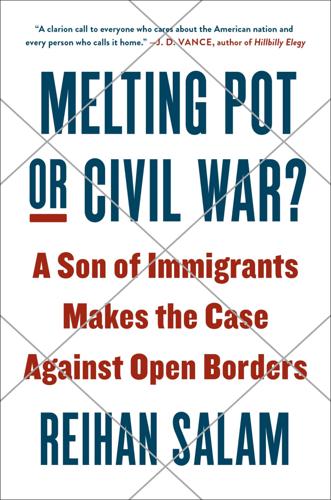
Melting Pot or Civil War?: A Son of Immigrants Makes the Case Against Open Borders
by
Reihan Salam
Published 24 Sep 2018
Many of them are Americans like me, with recent immigration in their families, and I understand where they are coming from. But I noticed a contradiction in the arguments I was hearing for more open borders, which led me to part ways with the pro-immigration activists. There is a yawning chasm separating standard-issue immigration enthusiasts, who insist with a straight face that more open immigration policies will have absolutely no negative consequences, and an emerging class of intellectuals I call the bullet-biters: serious, rigorous, thoughtful immigration advocates who recognize that if the United States is going to welcome a far larger number of low-skill immigrants, we Americans will have to transform our welfare state, and we might even have to countenance the creation of a new class of guest workers who would be permanently barred from citizenship.
…
But as far as the bullet-biters are concerned, that would be a small price to pay. I will have more to say about the arguments made by the bullet-biters in the chapters that follow. For now, though, I’ll simply note that I found their case bracing and enlightening. It turns out that the standard-issue immigration activists—the ones who want more open immigration policies and a more equal society or, in other words, who want to have their cake and eat it, too—are crushingly naïve. They haven’t really thought through where their convictions are taking them. Which leads me back to Akayed Ullah. Though he was entirely unlike most immigrants in his hatefulness, there were other aspects of his story, or at least of what I could suss out, that were more familiar, and that reflect exactly the problems that have made me question the wisdom of our immigration system.
…
Politico, February 13, 2018. www.politico.com/magazine/story/2018/02/13/immigration-visas-economics-216968. 21. Posner, Eric A. and Glen Weyl. “A Radical Solution to Global Income Inequality: Make the U.S. More Like Qatar.” New Republic, November 6, 2014. newrepublic.com/article/120179/how-reduce-global-income-inequality-open-immigration-policies. 22. Pethokoukis, James. “Why the US might need those Mexican high-school dropouts.” American Enterprise Institute, June 26, 2013. www.aei.org/publication/why-the-us-might-need-those-mexican-high-school-dropouts/. 23. Bivens, Josh. “A ‘high-pressure economy’ can help boost productivity and provide even more ‘room to run’ for the recovery.”
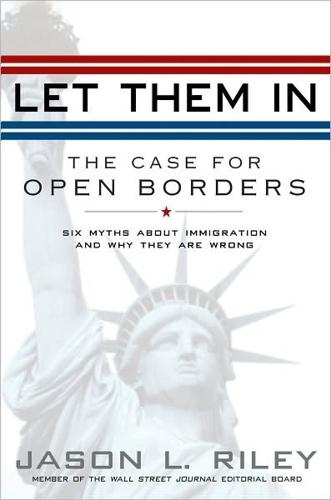
Let Them In: The Case for Open Borders
by
Jason L. Riley
Published 14 May 2008
Even better, it’s an indication that America is still winning the international battle for talent and human capital that will keep it competitive for generations to come. RICHER AND SAFER This book expounds on two general themes. The first is that, contrary to received wisdom, today’s Latino immigrants aren’t “different,” just newer. The second is that an open immigration policy is compatible with free-market conservatism and homeland security. I explain, from a conservative perspective, why the pessimists who say otherwise are mistaken. I argue that immigrants, including low-skill immigrants, are an asset to the United States, not a liability. Immigrants help keep our workforce younger and stronger than Asia’s and Europe’s.
…
Although it will surely be characterized as such, this book is not an argument for erasing America’s borders or dissolving our nation-state. Nor do I pretend that immigration has no economic costs. It does have costs, particularly in border regions and states with generous public benefits. But when those costs are properly weighed against the gains, open immigration and liberal trade policies still make more sense than protectionism, from both a security and an economic standpoint. The United States needs to better regulate cross-border labor flows, not end them. We still have much more to gain than lose from people who come here to seek a better life. SELECT BIBLIOGRAPHY Alesina, Alberto, and Francesco Giavazzi.
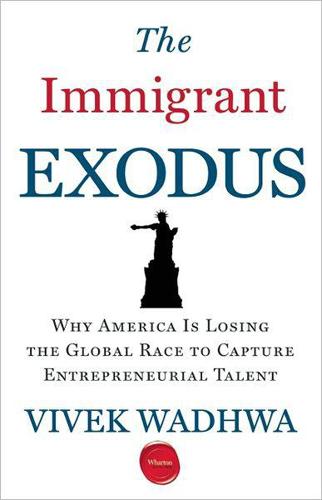
The Immigrant Exodus: Why America Is Losing the Global Race to Capture Entrepreneurial Talent
by
Vivek Wadhwa
Published 1 Oct 2012
Asking US technology and engineering companies to restrict their search geographically makes as much sense as telling the NBA it can't recruit players from outside the United States. Such a mandate would reduce the level of talent in the league, just as placing tighter strictures on H-1Bs and green cards would further reduce the level of science and engineering talent in the United States. To summarize, the advocates of a more open immigration policy feel the H-1B program limits the entry of global talent into the United States and should be significantly expanded. Detractors of the H-1B program feel it promotes wage arbitrage and a modern version of indentured servitude that depresses the wages of US workers in STEM fields. I agree with aspects of both arguments, but I believe that allowing for a more liberal H-1B policy will end any semblance of wage depression, as talented immigrants would quickly achieve market wages for their skills.
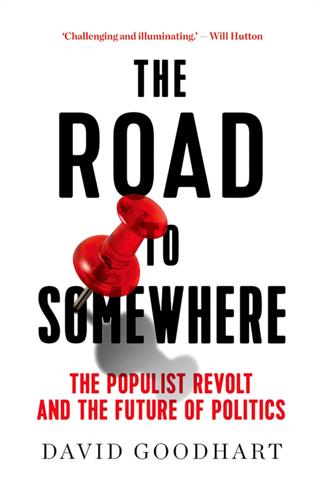
The Road to Somewhere: The Populist Revolt and the Future of Politics
by
David Goodhart
Published 7 Jan 2017
Indeed, as New Labour increasingly converged on a centre-right consensus on economics, being pro-immigration and pro-multiculturalism—‘Come here and be yourself’—loomed ever larger in the centre-left political consciousness. Several decisions were taken by Labour, all of which were reasonable in their own terms, that together created a far more open immigration regime (underpinned by the new Human Rights Act which made it harder to keep people out or deport them once here). What were those decisions? There was the repeal of the ‘primary purpose rule’ that had made it tougher for some ethnic minority groups to bring in spouses. The rule was regarded as discriminatory by some South Asian groups and its abolition was a payback to loyal minority voters.
…
They also pay too little attention to one of the central conundrums of societies like Britain: how can we achieve an open, mobile society—and elite—while continuing to value meaningful, in other words relatively stable, communities and without casting a shadow of failure over those who do not or cannot move up and out. If everyone could have a higher-status career then this problem would obviously not exist, but that is not possible and in any case there are millions of basic jobs that will always need doing—in care, retail, transport, cleaning, construction and so on. Relatively open immigration is one way to fill the jobs but at the cost of an alienated indigenous working class. The tearing down of prejudice and unjustified hierarchy also means the end of the stable, class-bound, pre-achievement society that many people found comfortable. As settled, group-based identities have given way to more individual and mobile experiences of the journey through life, the promise of greater freedom has brought with it greater responsibility for one’s own destiny.

The Cosmopolites: The Coming of the Global Citizen
by
Atossa Araxia Abrahamian
Published 14 Jul 2015
These questions might sound abstract, but they’re playing out before our eyes every day. When Scotland voted on whether to secede from the U.K. in 2014, the “yes” camp presented a softer, more inclusive, more progressive vision of what it means to be Scottish, pledging support both to the country’s social safety net and to more open immigration. The U.K., on the other hand, requires foreigners to make a minimum salary in order to live and work within its borders, and political parties across Europe (and beyond) employ increasingly xenophobic, anti-immigrant rhetoric, most likely in reaction to economic hardship, but also from a place of deep-rooted racism.
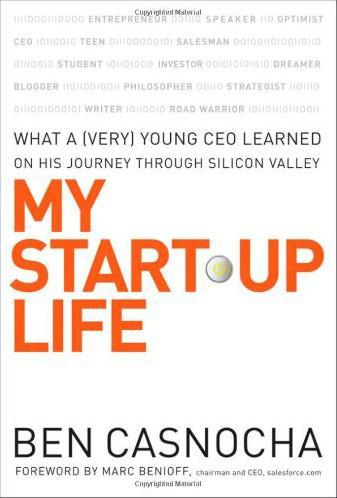
My Start-Up Life: What A
by
Ben Casnocha
and
Marc Benioff
Published 7 May 2007
Third, they will acquire solid foreign language skills and travel as much as possible. Finally, they will advocate for sensible political policies that not only will make the entrepreneur’s job easier but will increase the overall quality of life for most people in the world. In this spirit, they will reject protectionism, favor free markets, favor open immigration, and work to build social safety nets for those left behind. Writing Skill This may seem self-serving, since I enjoy writing, but I believe in it. Clear writing reflects clear thinking, and in an increasingly messy, complex world, clear thinking will be highly valued. Advanced 164 MY START-UP LIFE math skills will be important for scientists and engineers—and we need more of those—but for an average businessperson I don’t see math as integral to their future.
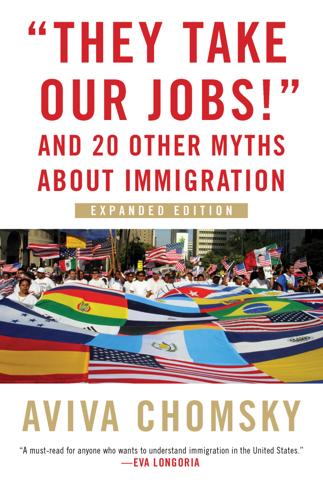
"They Take Our Jobs!": And 20 Other Myths About Immigration
by
Aviva Chomsky
Published 23 Apr 2018
They decided to make the journey, and they made it. All they had to do was get together the boat fare. The rules were different then. U.S. law explicitly limited citizenship and naturalization to white people. Nonwhites, however, were denied both entry and citizenship. Through a complex process of omission and commission, the law dictated open immigration for white people and restricted immigration for people of color. Immigration and naturalization law created, in the words of Aristide Zolberg, “a nation by design.”1 Between 1880 and World War I, about 25 million Europeans immigrated to the United States. They did not have visas or passports.
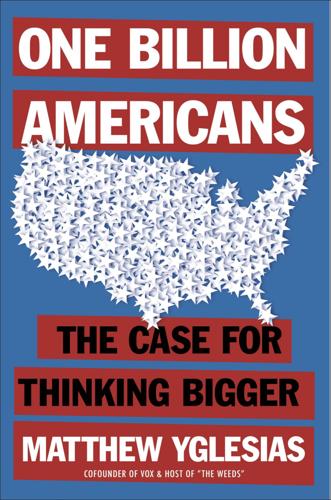
One Billion Americans: The Case for Thinking Bigger
by
Matthew Yglesias
Published 14 Sep 2020
As does inviting the foreign-born graduates of selective American colleges and graduate schools to stick around and work. Given the extent to which cultural (or to be blunt, racial) fears seem to drive much of immigration politics, it might be interesting to explore the idea of fairly free and open immigration from Canada, Australia, the Anglophone Caribbean, America’s NATO allies, or some other subset of countries that seems popular. Several years ago I was involved with hiring a well-regarded Canadian-born journalist who, at the time, was residing in London. Never having really given it much thought before, I was taken aback by how difficult it was to get a visa for her.

Silicon City: San Francisco in the Long Shadow of the Valley
by
Cary McClelland
Published 8 Oct 2018
He made early investments in Google, Facebook, Twitter, Pinterest, and on and on, becoming one of the industry’s most prominent “angel” investors. And he has done the same for local politicians. He was an influential donor to the past three San Francisco mayors. Like many Californians, he expresses passionate support for various liberal causes—gun control, open immigration, gender parity in the tech industry. And yet, he wrestles with the dissonance that plagues many of the area’s most influential executives: Why does he face so much criticism from people to his political left? I’m speaking at the Crunchy Awards tonight. The Crunchies is a celebration, it’s like the Oscars for tech.
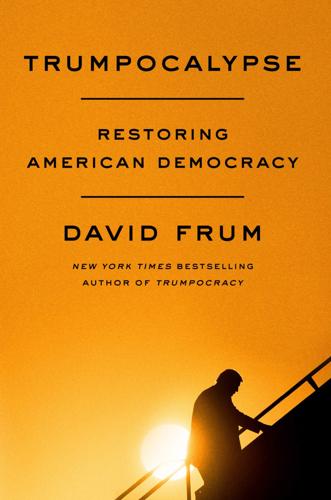
Trumpocalypse: Restoring American Democracy
by
David Frum
Published 25 May 2020
But in the United States, Americans with good coverage—including the socialized coverage of American Medicare—fear tumbling down the ladder to join the people with bad coverage. The beneficiaries of the dysfunctional status quo reject change that they fear will harm them and benefit others. That fear originates in America’s history of racial subordination. It is sustained by the widely shared and angry perception that open immigration redirects American health-care dollars to newcomers, legal and illegal. Those fears are often dismissed as irrational, but they contain large elements of truth. Of those who lacked health-care insurance in 2008, more than one in four—27 percent—were foreign-born.9 When President Obama proposed to raise taxes and crimp the future growth of Medicare to cover the uninsured, it was not crazy for fifty- and sixty-something Americans to think: If we’d had less immigration, my taxes would be lower and my Medicare would be safer.
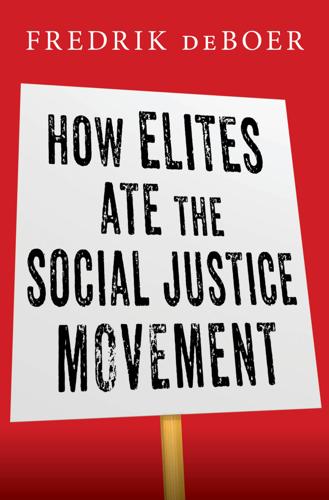
How Elites Ate the Social Justice Movement
by
Fredrik Deboer
Published 4 Sep 2023
For those of us on the left in the contemporary United States, practicality will always have some relationship to popularity. We don’t have to slavishly devote ourselves to what’s already popular; if we did, we would have no left program at all. But we do have to pay attention to where the public is now, and to where we want to take them, at all times. We can’t give up on core goals—like a dramatically more open immigration policy—simply because those goals are currently unpopular. But since violence is always a tactic and never an end itself, the popularity of political violence is tantamount to its value—if we commit acts of political violence in pursuit of some end, but erode our popularity in doing so, we are at best running in place.

City: Urbanism and Its End
by
Douglas W. Rae
Published 15 Jan 2003
These developments were: the rising dominance of steam-driven manufacturing, already noted; an agricultural revolution allowing the nation to support more and larger urban centers; the emergence, largely as a result of integrated railroad systems, of national markets accessible from central-city manufacturing plants; a critical timing gap between the maturation of that rail system (which centralized cities) and the coming automotive and truck transportation (which decentralized them); a sustained period of relatively open immigration allowing accelerated growth in the supply of urban labor; and a delayed and uneven spreading out and implementation of distance-compressing technologies such as alternating current (AC) electricity. The two nonevents (late motor vehicle development and delayed electrical grid implementation) are no less important than the four affirmative events (steam, farming, rail, immigration).
…
The woman, left foreground, seems to be using a baby carriage to haul lumber!59 New Haven’s great period of centered development, running from about 1850 to 1920, was sustained by the historical coincidence of all four features. Together with a national revolution in agricultural productivity, and an era of open immigration, these features constitute New Haven’s version of what I have been calling the “accidents of urban creation.” There was nothing fated about the matter, just the peculiar sequence of technological success stories and failures, put in place by the compulsions of capitalist organization. Fixed-path transportation, 58 I N D U S T R I A L C O N V E R G E N C E Figure 2.3.
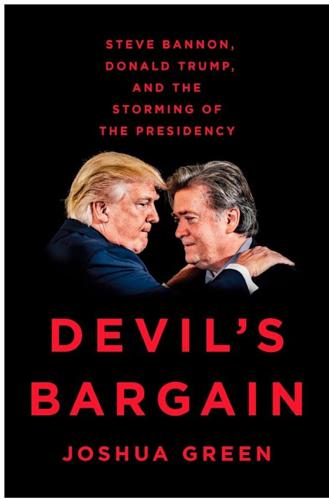
Devil's Bargain: Steve Bannon, Donald Trump, and the Storming of the Presidency
by
Joshua Green
Published 17 Jul 2017
Still, every president changes the contours of American politics, and Trump will, too. It may not be nearly as aggressively as Bannon envisioned when the two joined forces, or even necessarily in the direction he wanted, but it is also true that after Trump Republicans will have a harder time pursuing free trade and open immigration. Perhaps even more significant, the effects of Jeff Sessions’s elevation to attorney general will reverberate for years in a way that populist-nationalists will approve of. But in the end, it’s hard to imagine that Bannon and the legions he spoke for will wind up as anything other than the latest partners disappointed when their deal with Trump turns sour.

You Say Tomato, I Say Shut Up
by
Annabelle Gurwitch
Published 31 Aug 2010
Sure, we had lots of laughs and morning sex, but at the same time, Annabelle was calling me at work every hour on the hour with another complaint from the home front and how it was making her miserable and impossible for her to concentrate on her work. It could be said of our budding communal experience: “It was the best of times, it was the worst of times.” She Says After becoming the latest participant in Casa Kahn’s open immigration experiment, I began to notice aspects of Jeff’s behavior that gave me pause too. A Tale of Two Kitties? Please! It was a Comedy of Errors over at Kahn House. In truth, things like decorating aren’t that important to me; it wasn’t as if I insisted that we adopt the oppressively shabby-chic interior decor that everyone in Los Angeles was slouching around in at the time.

The End of Policing
by
Alex S. Vitale
Published 9 Oct 2017
With the rise of mass immigration in the late nineteenth and early twentieth centuries came growing nativist resentment. Throughout this period, groups such as the Immigration Restriction League and the American Party organized around ideas of racial purity, cultural superiority, and religious prejudice to demand an end to open immigration. This was finally achieved in 1924 with the passage of the National Origins Act, which established nationality-based immigration quotas for the first time. To enforce these quotas, Congress created the US Border Patrol. The new Border Patrol focused on limiting unauthorized immigration from Mexico.

Hostile Environment: How Immigrants Became Scapegoats
by
Maya Goodfellow
Published 5 Nov 2019
Even for those lucky enough to be able to afford it, there’s no guarantee that the advice you get is going to be reliable. ‘In the late 90s when New Labour came in, it was a sort of a golden age for legal aid … because there were a lot of asylum claims at that time the government was really throwing money at solicitors’ firms to get them to open immigration departments … to get solicitors trained up in immigration law so they could take on all these asylum claims,’ former immigration barrister Frances Webber remembers. The legal aid she talks about is money the state gives to people who need it to pay for advice or representation. It was available for people regardless of where they were born, so it could be used for people trying to regularise their status or claim British citizenship.
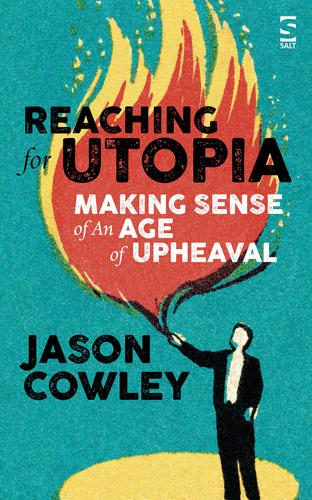
Reaching for Utopia: Making Sense of an Age of Upheaval
by
Jason Cowley
Published 15 Nov 2018
For all its soft-focus social liberalism, Cameron’s government was ‘neoliberal’, determined to cut back the state and reduce public spending to thirty-five per cent of GDP. In power, empowered by the Liberal Democrats, he and his chancellor, George Osborne, were doctrinaire austerians, but also liberal globalisers, with an open immigration policy and mercantilist foreign policy. Osborne was also a self-described ‘liberal interventionist’. May is moving the Tories in a different direction. Tory MPs say that, unlike her predecessor, she has a ‘people’ and she is far more at ease with the average Tory activist than the Cameroons were (one could always imagine them muttering about ‘swivel-eyed loons’ as they left a village fête).
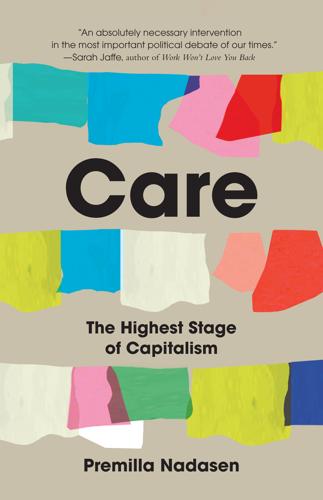
Care: The Highest Stage of Capitalism
by
Premilla Nadasen
Published 10 Oct 2023
Indeed, not only did the trade bring bonded workers to planters, but the process of enslaving and transporting people was profit-driven.39 Enslaved people both produced commodities and were treated as a commodity that was sold separate and apart from those commodities produced by their labor power. An analysis of racialized social reproduction calls into question whether the crisis of social reproduction will necessarily result in the destabilization of capitalism. Whether under institutionalized slavery, open immigration policies, or an expansive welfare state, capitalists have always accrued a certain amount of profit from social reproduction. Capital’s historic extraction of profit from the social reproduction of certain racialized bodies has become a widespread feature of contemporary neoliberal capitalism.
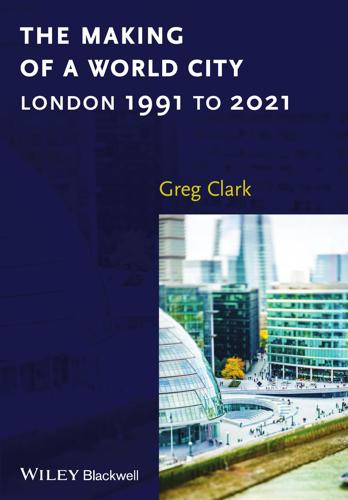
The Making of a World City: London 1991 to 2021
by
Greg Clark
Published 31 Dec 2014
Perhaps the most remarkable aspect of London migration since 1991 is its variety – in terms of origins, cultural traditions, motives, skills, lengths of stay, and channels of arrival (Gordon, 2014a). Throughout the 1990s and 2000s London benefited from more open access to the European Union labour market (which is much larger than the USA labour market) and from more flexible labour laws compared to many comparable cities. New Labour’s highly open immigration policy prompted a further influx. By 1998, the New York Times was moved to comment on the transformation of London by immigrants: “For most of the last 50 years, the French have felt superior to the British. London was the capital of an empire in decline, a quaint but backward place where prospects were bleak and unthinkable things like fish and chips wrapped in newspaper passed for haute cuisine.
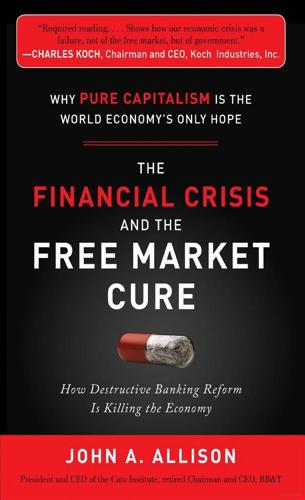
The Financial Crisis and the Free Market Cure: Why Pure Capitalism Is the World Economy's Only Hope
by
John A. Allison
Published 20 Sep 2012
Students from all over the world come to American universities to earn degrees in architecture, engineering, mathematics, the physical sciences, biotechnology, medicine, and business, but when they graduate, most of them are forced to return home. Under current U.S. law—which has been in place for many years—only 65,000 of these foreigners in brainpower fields can work in the United States, and even then, only under a temporary “H-1B” visa. Unfortunately, because of our social welfare systems, we cannot afford to have open immigration to the United States. Many people would immigrate not to work, but to get the “free lunch” that our welfare system provides. The answer is to eliminate the social welfare system because it also destroys the work incentive for U.S. citizens. Assuming that the welfare system will not be fixed, immigration will need to be controlled.
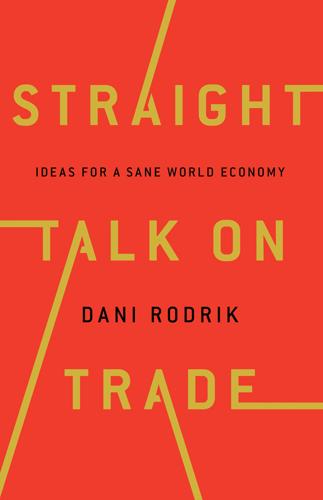
Straight Talk on Trade: Ideas for a Sane World Economy
by
Dani Rodrik
Published 8 Oct 2017
So, it is not a surprise that rightist politicians from Trump to Marine Le Pen lace their message of national reassertion with a rich dose of anti-Muslim symbolism. Latin American democracies provide a telling contrast. These countries experienced globalization mostly as a trade and foreign-investment shock, rather than as an immigration shock. Globalization became synonymous with so-called Washington Consensus policies and financial opening. Immigration from the Middle East or Africa remained limited and had little political salience. So, the populist backlash in Latin America—in Brazil, Bolivia, Ecuador, and, most disastrously, Venezuela—took a left-wing form. The story is similar in the main two exceptions to right-wing resurgence in Europe—Greece and Spain.
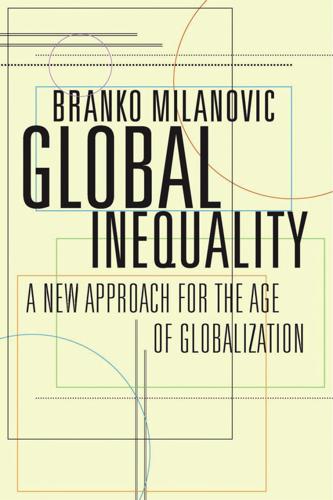
Global Inequality: A New Approach for the Age of Globalization
by
Branko Milanovic
Published 10 Apr 2016
In Including the Poor, edited by Michael Lipton and Jacques van der Gaag. Washington, DC: World Bank. Posner, Eric, and Glen Weyl. 2014. “A Radical Solution to Global Income Inequality: Make the US More Like Qatar.” New Republic, November 6. Available at http://www.newrepublic.com/article/120179/how-reduce-global-income-inequality-open-immigration-policies. Prados de la Escosura, Leandro. 2007. “Inequality, Poverty and the Kuznets Curve in Spain: 1850–2000,” Working Papers in Economic History, Universidad Carlos III, WP 07-13. Prados de la Escosura, Leandro. 2008. “Inequality, Poverty and the Kuznets Curve in Spain, 1850–2000.” European Review of Economic History 12: 287–324.

Work! Consume! Die!
by
Frankie Boyle
Published 12 Oct 2011
Of course, war to us seems so brutal, so unnecessary. That’s because we don’t own shares in arms companies. Those guys live in palatial penthouses full of shrunken heads and wank to the news. Still, we are members of our society, so we are complicit in what it does. Look at it this way. Personally, I think we should have much more open immigration arrangements, we should treat asylum seekers fairly, we shouldn’t imprison them and we particularly shouldn’t imprison their children. Perhaps I can hold that view because I live in a country that does the opposite. Because I have the security of knowing that it won’t happen. It’s the same with war.
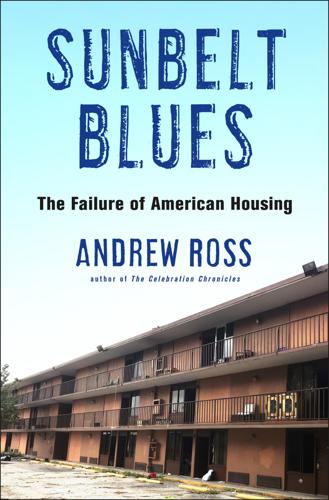
Sunbelt Blues: The Failure of American Housing
by
Andrew Ross
Published 25 Oct 2021
But as in most parts of the country, this lively thoroughfare is known to everyone by just its number. Other than three resorts (Fort Wilderness, Polynesian, and Contemporary) that opened along with the Magic Kingdom in 1971, there were no hotels in the early years on the Disney property, so the opportunity to capture the lodgings market on the theme park’s doorstep was wide open. Immigrants and starter entrepreneurs flocked to Route 192 to throw up motels on stretches of firm ground amid the swampy terrain. Unprepared for the influx, Osceola County officials declined to build sewage lines along the route, and the largest setups that could be operated off a well and septic tank were forty-room motels.

Servant Economy: Where America's Elite Is Sending the Middle Class
by
Jeff Faux
Published 16 May 2012
He thinks that the U.S. government will not, or cannot, regulate asset price speculation, and therefore we can expect more credit booms and busts. He also recognizes that open economic borders bring lower wages, inequality, and constant dislocation. But no matter—revolt from below is remote. The governing class will impose open immigration on the United States, and a docile population grateful for cheap imports will keep coughing up the revenue to finance our superior military power. Perhaps the most comprehensive and balanced effort to support the optimistic case is journalist Paul Starobin’s After America.25 Starobin accepts that we are at the end of U.S. global hegemony.
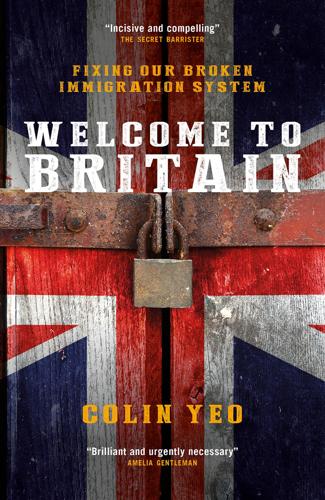
Welcome to Britain: Fixing Our Broken Immigration System
by
Colin Yeo;
Published 15 Feb 2020
Those whose British passports had been issued by colonial governments would lose their right of entry, meaning that different citizens with the same notional status had very different rights. At the same time, the Irish continued to enjoy unrestricted rights of entry and a voucher scheme for skilled workers was expected to maintain access to the United Kingdom for Old Commonwealth citizens. Britain went from having an extremely open immigration regime to an extremely closed one almost overnight, at least for racialised groups, and has been described as operating a ‘zero immigration’ policy for the next forty years.8 Inward migration did continue in these decades, but this was almost exclusively by family members joining those already living in the UK, not what might be called primary immigrants.
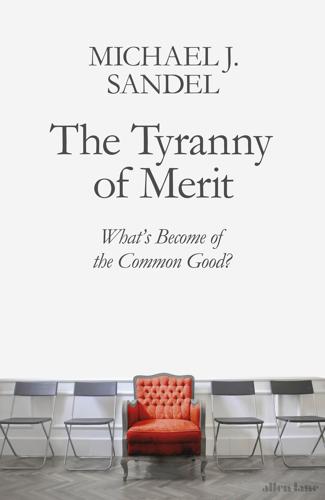
The Tyranny of Merit: What’s Become of the Common Good?
by
Michael J. Sandel
Published 9 Sep 2020
The U.S. approach, by contrast, cushions workers’ lost wages but does not affirm the dignity of work by ensuring that workers keep their jobs. 52 Other proposals Cass offers are more likely to appeal to conservatives, such as scaling back environmental regulations that cost jobs in manufacturing and mining industries. 53 On the fraught subjects of immigration and free trade, Cass urges that we view these from the standpoint of workers, not consumers. If our goal is the lowest possible consumer prices, he observes, then free trade, outsourcing, and relatively open immigration policies are desirable. But if our main concern is creating a labor market that enables low- and middle-skilled American workers to earn a decent living, raise families, and build communities, then some restrictions on trade, outsourcing, and immigration are justified. 54 Whatever the merit of Cass’s particular proposals, what is interesting about his project is that it works out the implications of shifting our focus from maximizing GDP to creating a labor market conducive to the dignity of work and social cohesion.
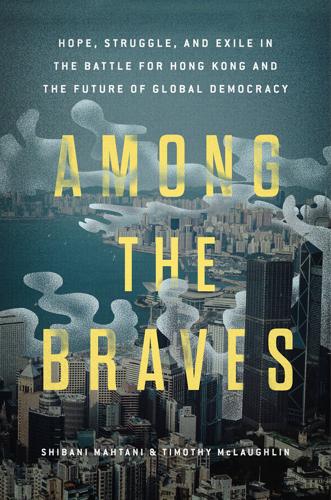
Among the Braves: Hope, Struggle, and Exile in the Battle for Hong Kong and the Future of Global Democracy
by
Shibani Mahtani
and
Timothy McLaughlin
Published 7 Nov 2023
Anxiety was palpable all through Hong Kong, even among those who had nothing to do with sensitive operations. In the wake of Tiananmen, calls for the British to grant all Hong Kong people the right of abode in the United Kingdom grew louder. Hopeful migrants were flocking to the Australian consulate or taking advantage of Canada’s relatively open immigration policy to settle in Vancouver and Toronto. Britain held firm that right to abode was “unrealistic” but eventually agreed to issue passports to fifty thousand people, including some at risk of persecution after the handover. Chu qualified, but not the rest of his family. One other pathway out was available to the Chus.
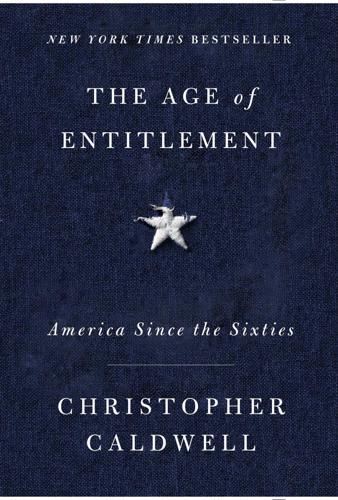
The Age of Entitlement: America Since the Sixties
by
Christopher Caldwell
Published 21 Jan 2020
The country outsourced repression along with jobs. Americans could get goods from authoritarian China more cheaply than from Western societies, with their trade unions and wage laws and workplace regulations. Many of the so-called developing countries did handsomely under globalization. If we were judging open immigration and outsourcing not as economic policies but as U.S. aid programs for the world’s poor, we might consider them successes. But we are not. The cultural change, the race-based constitutional demotion of natives relative to newcomers, the weakening democratic grip of the public on its government as power disappeared into back rooms and courtrooms, the staggeringly large redistributions of wealth—all these things ensured that immigration would poison American politics right down until the presidential election of 2016.

Fire and Fury: Inside the Trump White House
by
Michael Wolff
Published 5 Jan 2018
Conflict was the media bait—hence, now, the political chum. The new politics was not the art of the compromise but the art of conflict. The real goal was to expose the hypocrisy of the liberal view. Somehow, despite laws, rules, and customs, liberal globalists had pushed a myth of more or less open immigration. It was a double liberal hypocrisy, because, sotto voce, the Obama administration had been quite aggressive in deporting illegal aliens—except don’t tell the liberals that. “People want their countries back,” said Bannon. “A simple thing.” * * * Bannon meant his EO to strip away the liberal conceits on an already illiberal process.

New Laws of Robotics: Defending Human Expertise in the Age of AI
by
Frank Pasquale
Published 14 May 2020
Funding shortages for elder care are not natural dictates of economic science. Nor is the workaholism that can make more frequent family visits seem like an unattainable luxury. They are artifacts of specific public policies, and they can be reversed (or at least ameliorated) by better policies. If wealthy countries had more open immigration policies, workers from many other nations would take on caregiving work. As Ai-Jen Poo has demonstrated, humane arrangements for immigrant labor (and paths for citizenship) are paths to global solidarity and mutual aid.81 Similarly, firms lamenting a lack of qualified workers have been swamped with applications when they raised compensation levels.82 Admittedly, different governments may make different judgments about the proper extent of robotic care for the elderly.
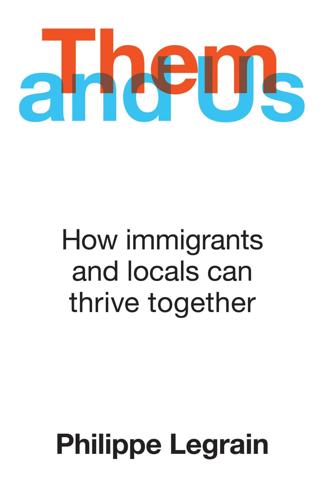
Them and Us: How Immigrants and Locals Can Thrive Together
by
Philippe Legrain
Published 14 Oct 2020
And they ignore the crucial fact that entrepreneurs often arrive penniless with few qualifications yet go on to great things. A start-up visa scheme would not have admitted Jan Koum, who went on to found WhatsApp, Sukhpal Singh Ahluwalia, who went on to establish Euro Car Parts, or many other successful immigrant entrepreneurs. Start-up visas have their place, though they are not a substitute for an open immigration policy. Next, we look at another category of migrant in hot demand: international students. 8 DIPLOMA DIVIDEND Yusra Uzair was born in Pakistan, grew up in Canada, has worked in Mexico and Peru and studied for a master’s degree in international migration and public policy in London. She chose to study in the UK partly for personal reasons; much of her mother’s family is based in Britain.
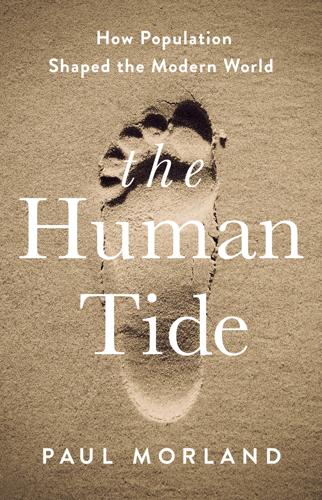
The Human Tide: How Population Shaped the Modern World
by
Paul Morland
Published 10 Jan 2019
There was already a Mexican population in place when the US annexed what was then the northern half of Mexico in 1848, although it was probably not much greater than 100,000 and many of these left.28 Yet despite this and the repatriation and deportations of the depression era, the Mexican population grew steadily, and by 1970 the census showed over 9 million Latinos in the US, of whom around half were Mexican.29 At this stage the number began to rise sharply: by 1973 there were already 6 or 7 million Mexicans in the country. By 1980 there were nearly 15 million Hispanics, representing more than 6% of the population, of which around 60% were Mexicans, the next largest group being Puerto Ricans (15%) and Cubans (12%). The latter were given open immigration rights as part of the government’s anti-Castro policy.30 Growth continued well into the twenty-first century. According to the 2010 census, Hispanics as a whole were over 16% of the population, outstripping the traditional largest minority, blacks, who comprised below 14%, while at 50 million, Latinos, two-thirds of whom are now Mexican or of Mexican origin, had grown more than fivefold in forty years; those self-identifying as fully white were now below two-thirds of the total and as fully or partly white little more than three-quarters.31 While most of the growth of the Latino population since the 1960s was driven by immigration, it was also partly ‘natural’: with a young demographic profile and high fertility, the Hispanic birth rate was half as high again as that of whites and for Mexicans in particular higher still.32 Indeed, in the early twenty-first century, with immigration slowing, births to Mexicans in the US outstripped arrivals of Mexicans.33 This great migration to the US may not have been as large in relative terms as the migration at the end of the nineteenth and early twentieth centuries: back then, the foreign-born population of the US peaked at around 14% while in the late 1990s it was around 8%.34 However, in absolute terms it has been the largest inflow the country has experienced.
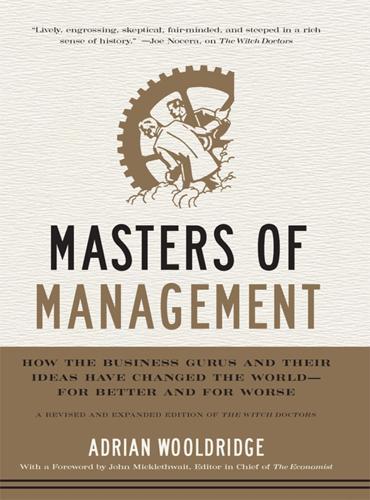
Masters of Management: How the Business Gurus and Their Ideas Have Changed the World—for Better and for Worse
by
Adrian Wooldridge
Published 29 Nov 2011
Stanford University, which has so far made more than $200 million from its investments in Google alone, is so keen on promoting entrepreneurship that it has created a Monopoly-like game to teach its professors how to become entrepreneurs. About half of the startups in Silicon Valley have their roots in the university. The Massachusetts Institute of Technology (MIT) has produced so many successful spin-offs that, if they were turned into a nation, they would have the 28th-largest GDP in the world. The third is a historically open immigration policy. Vivek Wadhwa, of the University of California, Berkeley, notes that 52 percent of Silicon Valley startups were founded by immigrants, up from 25 percent a few years ago, with Indian immigrants founding 26 percent of them. In all, one-quarter of America’s science and technology startups, generating $52 billion and employing 450,000 people, numbered somebody born abroad as either their CEO or their chief technology officer.
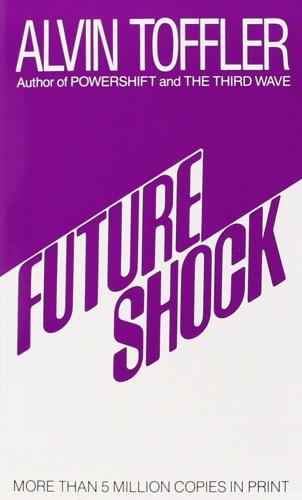
Future Shock
by
Alvin Toffler
Published 1 Jun 1984
It was no surprise therefore to find that Swedish sociologists today are torn by debate over whether foreign worker populations should be assimilated into Swedish culture or encouraged to retain their own cultural traditions—precisely the same "melting pot" argument that excited American social scientists during the great period of open immigration in the United States. MIGRATION TO THE FUTURE There are, however, important differences between the kind of people who are on the move in the United States and those caught up in the European migrations. In Europe most of the new mobility can be attributed to the continuing transition from agriculture to industry; from the past to the present, as it were.

America Right or Wrong: An Anatomy of American Nationalism
by
Anatol Lieven
Published 3 May 2010
Unlike its predecessor of the 1870s in the South, this short-lived but widespread movement was based chiefly in the Midwest and was devoted above all to anti-immigrant, anti-Semitic, anti-Catholic and antimodernist sentiment, with Negrophobia present but of lesser importance. It was deeply steeped in evangelical Protestantism and reflected, among other things, the agricultural depression of the decade and the pressure it was putting on the old farming communities from the old "core" populations (plus German Protestant).40 The end of open immigration in 1924 reduced the appeal of such movements.41 This measure in turn owed a great deal to two passages of public hysteria which were strongly fed by nativist and anti-immigrant sentiment: the wave of antiGerman feeling which swept the country in 1917-18 after America entered World War I and the "Red Scare" of 1919-20.
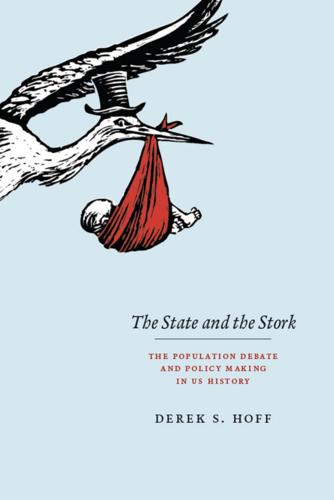
The State and the Stork: The Population Debate and Policy Making in US History
by
Derek S. Hoff
Published 30 May 2012
But more importantly, many liberal advocates of reform, consistent with the unease with demographic change permeating the Great Society, not only argued that immigration reform would and should be demographically neutral but also expressed opposition to domestic population growth from any source. The prospect of population increase was the third rail of the 1960s immigration-reform debate: the range of options considered was limited by the prevailing sense that America already had too large a population. A truly radical policy shift toward nearly open immigration would have met opposition regardless of prevailing growth rates, but population anxiety narrowed the possibilities. Of the many proposals for reform batted about in the early 1960s, none envisioned more than a very modest increase in total immigration.151 The road to immigration liberalization began in the 1920s, when ethnicbased interest groups and some lawmakers rallied against the new restrictive regime.
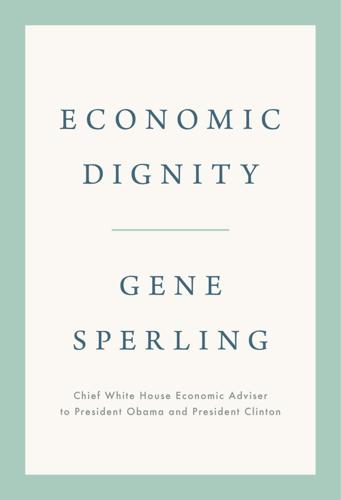
Economic Dignity
by
Gene Sperling
Published 14 Sep 2020
Economist Dean Baker, a frequent critic of trade policies of both Democratic and Republican administrations, has noted that while the harsh dislocation of factory workers is often accepted as simply an unfortunate fact of economic dynamism, the same nonchalance is often not seen when professional jobs are at stake. As an example, he points to the resistance that would no doubt exist if there was wide-open immigration for doctors, even if it lowered overall medical costs for Americans.36 James Carville once asked what debates on trade agreements would be like in Washington, DC, if the economic analysis determined that an agreement would lead to lower prices, more competition, and innovation but also to no one being able to get their child into their top two choices for private schools.
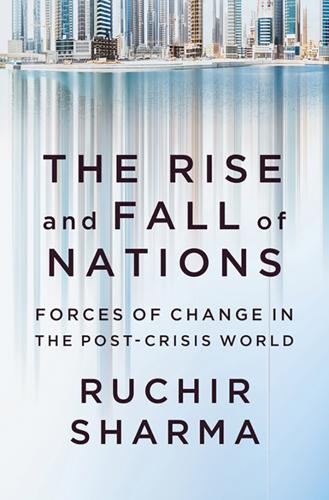
The Rise and Fall of Nations: Forces of Change in the Post-Crisis World
by
Ruchir Sharma
Published 5 Jun 2016
Geographic sweet spots are not static—they grow more or less sweet with the rise and fall of neighbors and shifting trade patterns. Australia’s fall from good to ugly has been rapid. It has gone a quarter-century without suffering a recession, and that long run of success fed a case of severe complacency. Even the major positive for Australia—a relatively fast population growth rate boosted by open immigration—is under threat. Anti-immigrant sentiment is a growing force in Australian politics, despite the fact that the number of migrants is falling. Migration now adds 0.7 percent to the population each year, down by half since 2008, as trouble in commodity industries dries up job opportunities. Like many emerging economies, Australia had indulged itself during the commodity price boom.

The Zionist Ideas: Visions for the Jewish Homeland—Then, Now, Tomorrow
by
Gil Troy
Published 14 Apr 2018
The Biltmore Conference in New York that year captured the shift. While reaching out to the Arabs of Palestine, the conference declared: “The new world order that will follow victory cannot be established on foundations of peace, justice, and equality, unless the problem of Jewish homelessness is finally solved.” The conference endorsed opening immigration to Palestine and establishing “a Jewish Commonwealth integrated in the structure of the new democratic world. . . . Then and only then will the age old wrong to the Jewish people be righted.” Having reached that conclusion earlier, Wise was frustrated by “Jewish cowards” who ignored the threat antisemitism imposed and the opportunities Zionism offered.

The Age of Turbulence: Adventures in a New World (Hardback) - Common
by
Alan Greenspan
Published 14 Jun 2007
T H E AGE OF T U R B U L E N C E tion from Latin America will alter the cultural composition of our society. But these are people who have chosen to leave their home countries, a seeming rejection of much of the populist culture that has so inhibited Latin American economic growth. That was also the case with the open immigration at the turn of the last century. Those immigrants were successfully absorbed in our nation's "melting pot." In the less pressing period after World War II, but before globalization took hold, governments were able to construct social safety nets and engage in other policies to shelter citizens from the gale of creative destruction.